OTHER BOOKS BY DAVID ASTLECluetopiaPuzzledPuzzles and WordsPuzzles and Words 2RiddledomWordburgerTo Heather and Barry, the carer and the cared First published in 2018 Copyright David Astle 2018 All rights reserved. No part of this book may be reproduced or transmitted in any form or by any means, electronic or mechanical, including photocopying, recording or by any information storage and retrieval system, without prior permission in writing from the publisher. The Australian
Copyright Act 1968 (the Act) allows a maximum of one chapter or 10 per cent of this book, whichever is the greater, to be photocopied by any educational institution for its educational purposes provided that the educational institution (or body that administers it) has given a remuneration notice to the Copyright Agency (Australia) under the Act. Allen & Unwin 83 Alexander Street Crows Nest NSW 2065 Australia Phone: (61 2) 8425 0100 Email: Web: www.allenandunwin.com

ISBN 978 1 76029 548 6 eISBN 978 1 76063 754 5 Internal design by Bookhouse Set by Bookhouse, Sydney Cover design: Nada Backovic Cover image: Shutterstock The essence of the independent mind lies not in what it thinks, but in how it thinks.
Christopher Hitchens
Sir Arthur Conan Doyle, the creator of Sherlock Holmes, compared the human brain to an empty attic, with one catch: You have to stock it with such furniture as you choose. Neuroscientists may dispute the empty side of thingsa living brain might seem inert to the naked eye but its never empty.
No clinician worth their salt, however, would quibble that ours is the power to furnish the room upstairs, equipping the brain with fresh ways of thinkingthe idea central to this book. Whether you load your cranium with detective novels or music, maps or Grand Prix races, the input will influence how you see the world, and how your brain operates. Puzzles alone can shape your grey matter in surprising ways. A simple matchstick array, for instance, can sharpen your spatial smarts. A sudoku grid is tailor-made to hone your logic, pushing the bounds of what-if algebra well past the grids confines. Anagrams can blend your powers of language dexterity and problem-solving as much as blending letters.
And then there are the lateral leaps involved in a cryptic crossword, furnishing the attic with fittings youve never even imagined. All these pursuits occupy Part One of Rewording the Brain, as we grapple with the why behind the puzzle impulse: why our brains are attracted to wordplay and other deceptions in the first place, and why the habit of solving conundrums has multiple benefits for Doyles room upstairs. Part One will also reveal how an appetite for puns can encourage an inventive mindset. Well take time to road-test quick and cautious thinking, seeing how puzzles can boost both modes, and why they enhance daily resolutions. Well also explore how cryptic language boosts the knack of connecting and disconnecting concepts both small and large: one more avenue towards a lither brain. More than memory or focus or strategic savvy, puzzles can deliver subtle advantages.
To understand these in real terms, well call on the latest studies from home and abroad, playing jazz and obsessing over blackberries, visiting an amnesiac called HM plus a lovable crossword class, unlocking research that maps the way we humans have flourished as insightful animals. Flourished and enduredwith census data indicating some 15 per cent of Australians are now over 65, a portion translating as close to four million people. Projections suggest that figure will reach 8.7 million by 2056. Yet growing older doesnt always mean growing better; brains age in tandem with their owners. The cortexor outer layerthins. Plasticity abates.
Neural links can slow over time. And the older we get, the more we live with the spectre of dementia. But we can make an active difference and lend our brains every chance to keep pace with an evolving world. How might puzzlesand other brain gameshelp us? Can a crossword a day really keep the fog at bay? Part One aims to illuminate what the latest findings tell us. Over the next ten chapters well enter the brain itself, starting with a virtual tour. Or at least, we will as much as anybody can: even among experts, like British neuroscientist Susan Greenfield, the brain remains the final frontier in human understanding.
In a space the size of a match-head, say, the brain plays host to as many as a billion neural connections, teeming with activity. In a short while well learn the nature of this tumult and how we might enhance its powers via puzzling. No sooner will you learn of the brains floorplan and functionsthe secrets behind deduction and intuitionthan youll reach a second mystery, better known as cryptic crosswords. Gobbledegook to some people, addictive delight to others, the cryptic clue in all its shapes and sizes will be unravelled in Part Two, the books other hemisphere if you like, the How-To succeeding the Why. There Ill equip you with the art of clue-conquering, sharing the lowdown on the cryptic genres formulasfrom anagrams to charades, from homophones to reversalstelling you how to spot them and how to pounce. That said, you may already be a seasoned solver.
If so, feel free to leapfrog Part Two, although Id advise otherwise, since tucked away in this segment is a celebration of the crafts finer points, outlining the rarer traps you may meet in the land of Cryptopia. Rookies and veterans alike will glean insights galore, and meet some spectacular clues as examples. After the tutorial comes the party that embodies Part Three: a suite of 50 puzzles to extend your brand-new talents. Part Threethe cerebellum annexed to the books two hemispheresis an original crossword collection arranged from friendly to gnarly. First come the samplers, mini-grids devoted to certain cryptic recipes, and later a procession of mixed clues, with sneak-peek options to reveal each clue type in case the going gets too tough. Beyond that, in the coda of puzzles to conclude the book, youll be solving solo.
Maybe you wont crest the highest peak this time around, but youll definitely learn the reasons why the striving counts, as well as grow familiar with the ground rules. Regardless of the heights you climb, your grey matter will thank you, not just today, but every day you wrestle with a puzzle. Rewording the Brain is the book to explain why, as well as show you how. The brain is the bodys command centre, the headquarters in our head. Scary when you consider how small it seems, weighing roughly 1.3 kilograms, compact enough to perch in a cupped palm. Yet the key word here is compact.
While the organ may resemble a small parboiled cabbage, there is a lot to see if you know where to look. Take the outer layer encasing the cabbages bulk. This is the cortex, Latin for bark, the actual grey matter we use as colloquial shorthand for the brain itself. The cortex is responsible for all manner of vital functions, from memory to attention, from language to awareness: the core skills a puzzle demands. Its no thicker than leather, only 2.5 millimetres deep on average, but critically, unlike leather, the cortex is convoluted: a crinkled mass of ridges (gyri) and furrows (sulci), plus the deeper indents known as fissures. Together, these corrugations allow humans to out-think any other species.

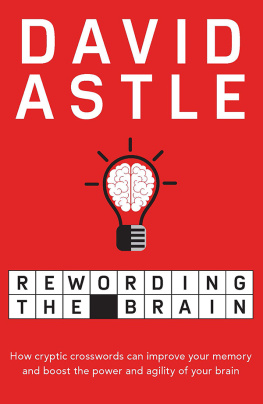
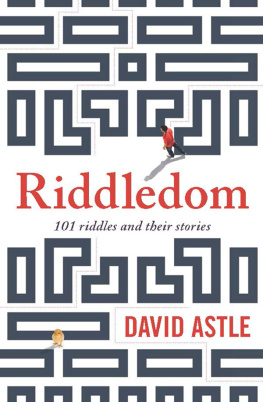
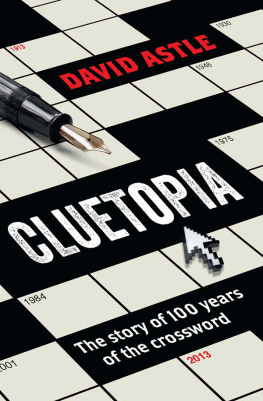
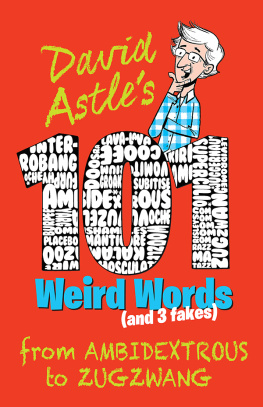
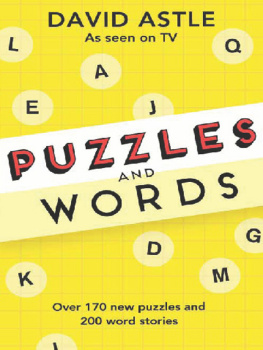

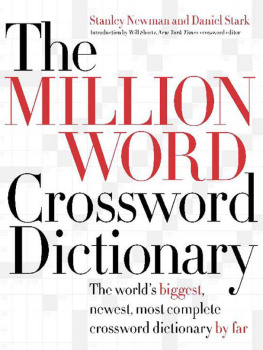
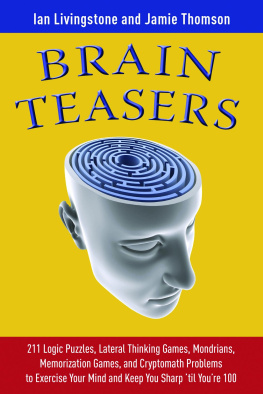
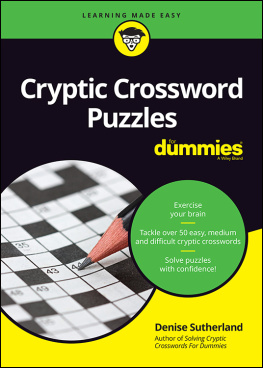
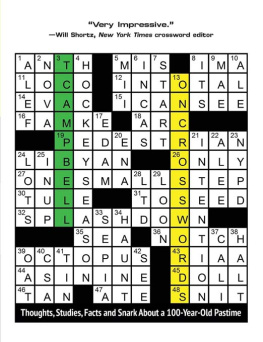
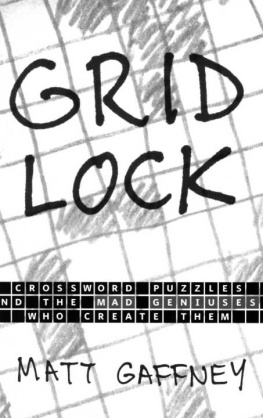
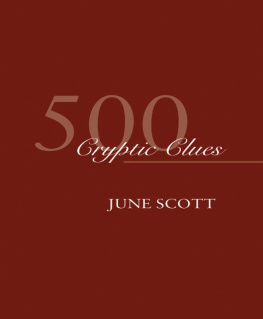
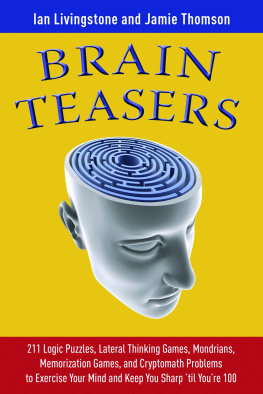
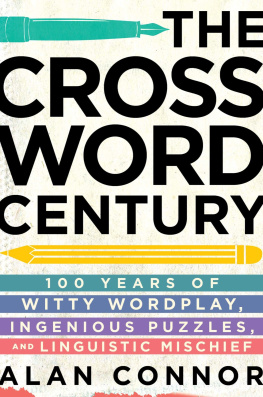
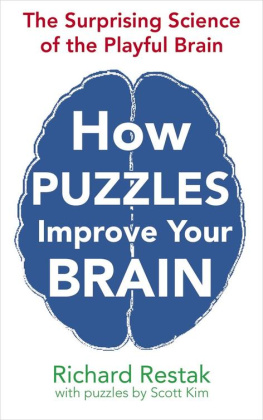

 ISBN 978 1 76029 548 6 eISBN 978 1 76063 754 5 Internal design by Bookhouse Set by Bookhouse, Sydney Cover design: Nada Backovic Cover image: Shutterstock The essence of the independent mind lies not in what it thinks, but in how it thinks. Christopher Hitchens
ISBN 978 1 76029 548 6 eISBN 978 1 76063 754 5 Internal design by Bookhouse Set by Bookhouse, Sydney Cover design: Nada Backovic Cover image: Shutterstock The essence of the independent mind lies not in what it thinks, but in how it thinks. Christopher Hitchens Sir Arthur Conan Doyle, the creator of Sherlock Holmes, compared the human brain to an empty attic, with one catch: You have to stock it with such furniture as you choose. Neuroscientists may dispute the empty side of thingsa living brain might seem inert to the naked eye but its never empty.
Sir Arthur Conan Doyle, the creator of Sherlock Holmes, compared the human brain to an empty attic, with one catch: You have to stock it with such furniture as you choose. Neuroscientists may dispute the empty side of thingsa living brain might seem inert to the naked eye but its never empty.